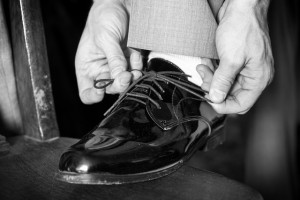
 Contributor: Ian Gershman, Chief Operating Office for Daytop New Jersey
Contributor: Ian Gershman, Chief Operating Office for Daytop New Jersey
“Families are the compass that guides us. They are the inspiration to reach great heights, and our comfort when we occasionally falter.” (Brad Davis)
In the addicted family, wherein we identify one (or more) members as having a substance use disorder, the overall effect on that family system is such that the compass for thinking, feeling and living is completely turned on its head, making up seem down and down seem up and all things great or faltering take on completely different meanings.
In the family with an addicted member, routines are disrupted, roles are misaligned or even reversed and what would seem to the outsider to be intolerable somehow compels its participants to fight tooth and nail to keep the crumbling family system together.
2 Dynamics – Adult or Teen
 Families who have a substance use disorder active within them develop trauma across multiple levels. First at risk is the development of the individual within the family.
Families who have a substance use disorder active within them develop trauma across multiple levels. First at risk is the development of the individual within the family.
The family supports, challenges, coaches and loves its members through each of their individual stages of growth, supplying the necessary encouragement in the right form to ensure that personal growth continues.
This growth process is interrupted when the necessary responses within the family have been preoccupied with and focused on the substance abuser.
The trauma occurs, though, not only at the individual level but in the wider gestalt of what the family is, what purpose it serves, belief, as well as faith that the family is a positive force and learned lessons that then follow through into the next generation.
The addicted teen interrupts his or her own learning as well as other siblings. The addicted adult has a greater effect on succeeding generations as children of alcoholics (COA) become adult children (ACOA).
While these succeeding generations may or may not have a substance disorder they will have all the dysfunctions therein, and the development of their family as a robust unit that supports, encourages and has the power to free the generation from fear and self-loathing cannot do its job to break the cycle.
Specific Symptomatology
In the treatment setting we consider the entire family system as having been affected and more importantly understanding that without the strengthened and altered family system, the individual needing to remain sober within it will have little chance. Issues will vary depending upon who it is in the family system that is using.
Some of the more common issues learned by family members as a means of survival in the addicted family can include:
Managing Emotions in a Manner that is Modulated and Controlled
 The addicted family swings from high intensity to very low. Behavior is equally affected swinging back and forth from impulsivity to rigidity.
The addicted family swings from high intensity to very low. Behavior is equally affected swinging back and forth from impulsivity to rigidity.
Orientation to reality and the appropriate cognitive/emotional response are behaviors that individuals should be able to try out within the family system as well as for which they need healthy models.
Instead the behavior modeled/enacted is at one end of the spectrum fierce denial that there is a problem or it’s opposite a despair that becomes passive and victimizing making real change impossible.
Lessons Learned Through the Family
Lessons learned through the family are important in regard to appropriate care for one self and others. In the addicted system this is frequently out of balance. The ebb and flow of life and our energy to engage or withdraw – in the healthy family this ebb and flow is allowed for.
The addicted family pushes members to the outside extremes finding either a hyper set of functioning behaviors or under involvement in each other’s lives. Healthy families teach individuals health love. In addicted families what is often seen is enmeshment or its opposite disengagement.
A Realistic Image of One Self
A realistic, loving and supported image of one self is formed primarily through the family’s interaction –leaving teens vulnerable should the necessary framework not be set. An inflated sense of self or its opposite, very poor self-worth are common characteristics in the addicted family system.
Options for Treatment and Success
 Even the most motivated and stable of recovering individuals don’t stand a chance at success if they are re-entering a family system that hasn’t changed. Conversely stable individual recovery in conjunction with reorganization of the family to a healthy system yields excellent results in functioning for all members.
Even the most motivated and stable of recovering individuals don’t stand a chance at success if they are re-entering a family system that hasn’t changed. Conversely stable individual recovery in conjunction with reorganization of the family to a healthy system yields excellent results in functioning for all members.
Levels of care and the appropriate form of treatment (residential, outpatient, in-home etc.) are always dependent upon individual case dynamics. However, regardless of treatment setting, certain constants exist and must be a part of all treatment programs that engage families to ensure continued success for the identified patient.
The Treatment Journey Consists of Three Components:
Assessment and mapping of the family system.
Through this process the therapist can determine unhealthy alliances between family members, patterns of communication that perpetuate fractures between members and perpetuate the problem and pinpoint those specific dynamics that will be the focus of treatment.
Confronting and directing.
In this stage through direct contact and interaction with the family as it is functioning in treatment together the therapist points out through various methods the unhealthy alliances as they manifest themselves in sessions.
Creating awareness through education of the family in the futile behavior in which they are engaging and encouraging them to behave in a new, more effective and appropriate roles is the task at this stage.
Encouraging and guiding.
Finally treatment must allow families to operate in their home system and return to treatment to analyze and learn from their experiences outside of the treatment system.
 Here the therapist offers insight and helps families by guiding them towards the creation of bonds over new experiences, patterns and rituals in which the family has and will participate in moving forward.
Here the therapist offers insight and helps families by guiding them towards the creation of bonds over new experiences, patterns and rituals in which the family has and will participate in moving forward.
The power of the addicted family to create trauma across all its members is profound. Equally so we know through experience in the clinical setting that focused work by non-addicted family members, each working their own program and participating in a process that looks at them also as a unit system creates mental, emotional and spiritual growth and change for all members.
Recovery is possible and families can break the cycle of addiction and all the fallout that is creates within a family system. While the family acts in many cases as the root of many problems faced by individuals in addiction it is also a powerful medium for change.
Our experience in the clinical setting shows that the restoration of health, happiness and hope as well as real recovery is possible.
Community Discussion – Share your thoughts here!
What are your thoughts on, and experiences with, families working their own program and participating in the recovery process with their family member?
Last Updated & Reviewed By: Jacquelyn Ekern, MS, LPC on November 8th, 2014
Published on AddictionHope.com
